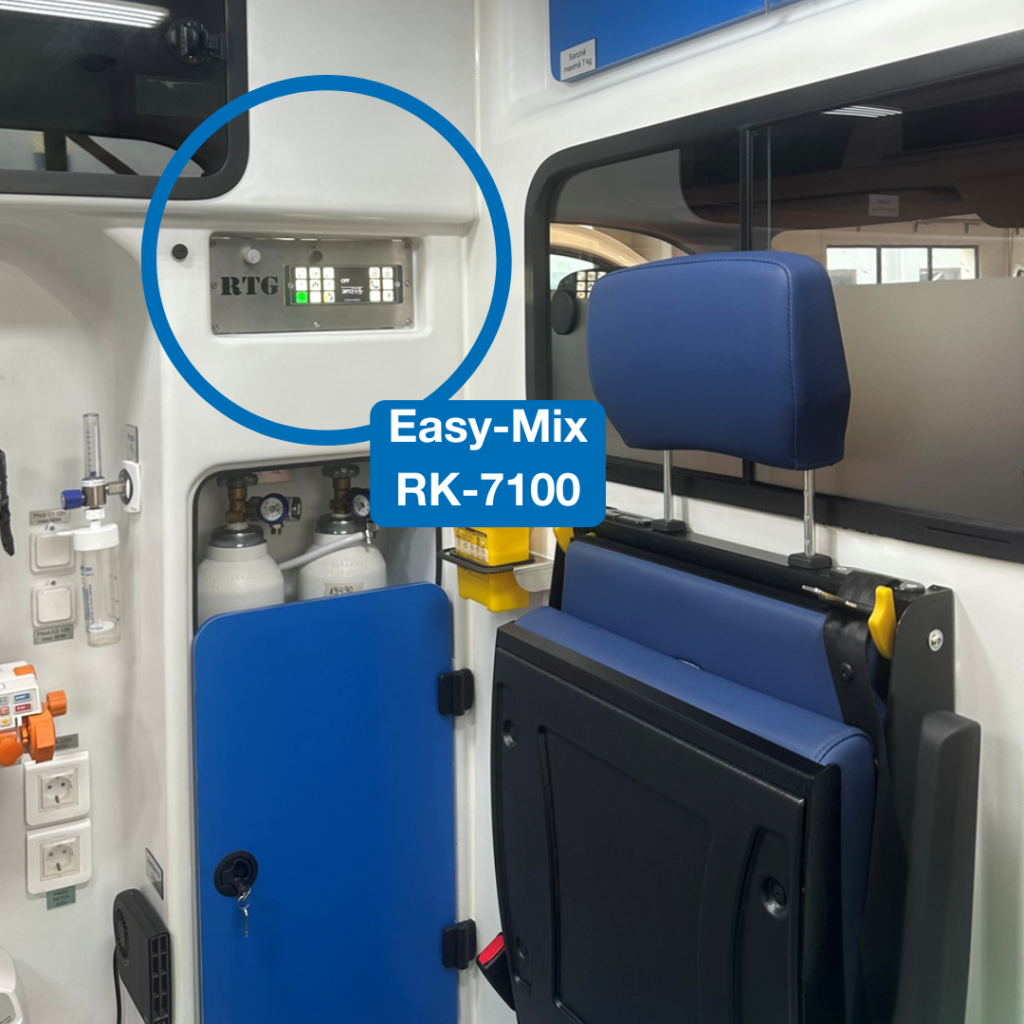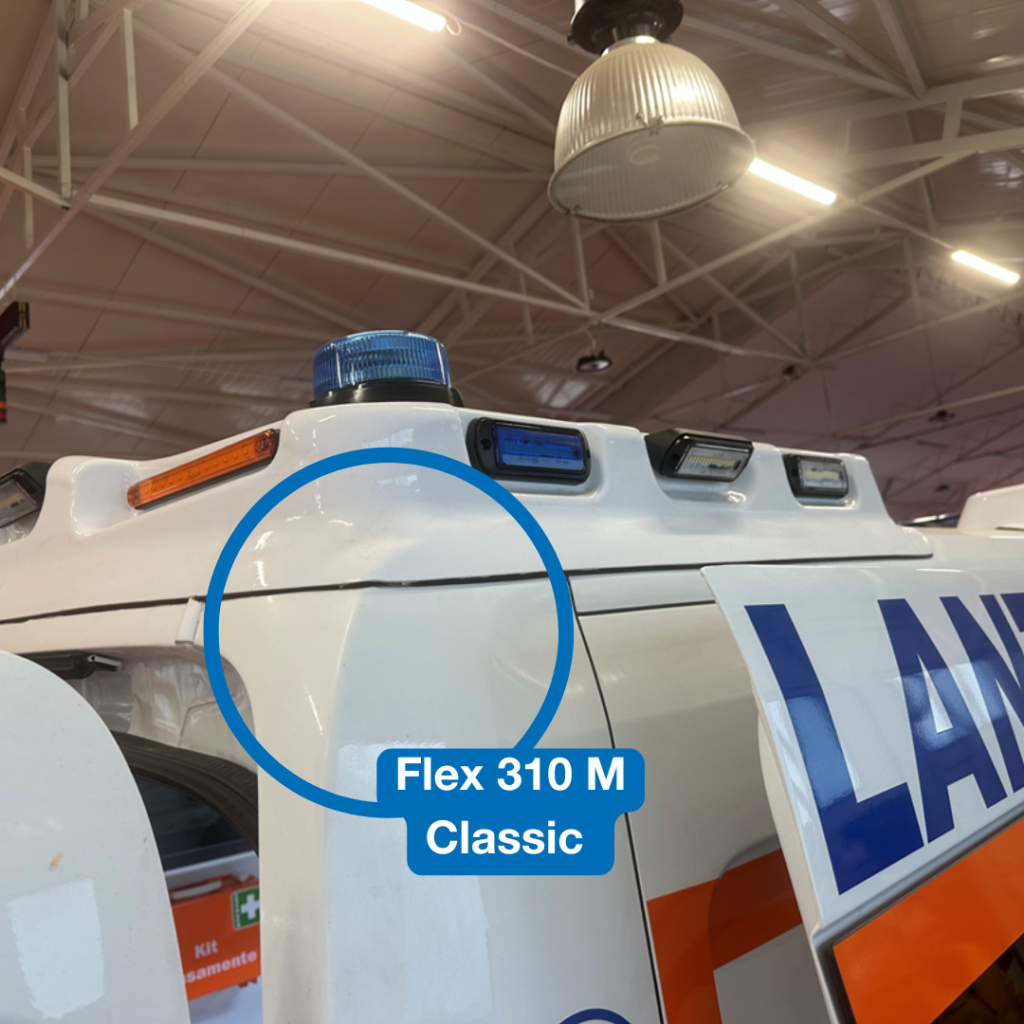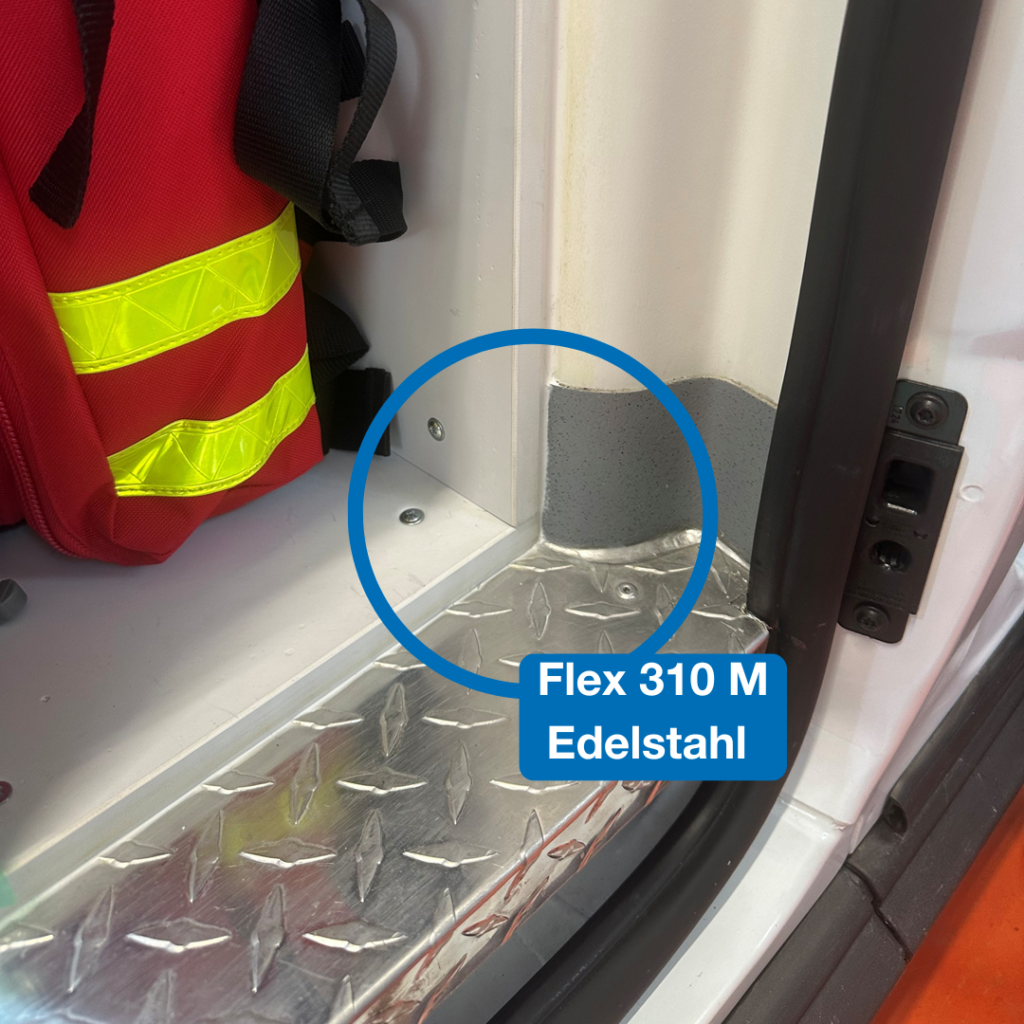Ambulances are in service day and night – responding to medical emergencies, accidents, or large-scale disasters. However, before they can save lives, skilled workers build them with great precision and care. Which later counts in an emergency. Every detail is taken into account during production – especially when combining different materials. The right bonding technology plays a crucial role in patient transport to ensure safety, functionality, and durability. In emergency vehicles in particular, components are exposed to strong vibrations, temperature differences, and mechanical stress. Bonded components must therefore remain stable over time – even under daily use. It is therefore important that the right adhesives and sealants are used.
Adhesive technology in ambulance transport – practical examples
Manufacturers of modern emergency vehicles process a wide range of demanding materials, including aluminum, stainless steel, painted steel, and ABS plastic. Although these materials offer many advantages in vehicle construction, they also place unique demands on adhesive technology. This requires working with the right adhesive, the correct pretreatment, and the necessary expertise…
Reliable bonding of a wide variety of materials
A good example is the bonding of a control panel inside an ambulance. Control panels serve as control and monitoring devices for electrical systems within the vehicle—they can be used to operate the power supply and control medical devices, lighting, air conditioning, and ventilation. Before bonding can begin, one step is essential: proper cleaning of the surface to be bonded. WEICON Surface Cleaner is used for this purpose, as it cleans and degreases surfaces without leaving any residue. The control panel is then bonded in place in the ambulance using WEICON Easy-Mix RK-7100 in black. This high-performance adhesive offers particularly high strength and, thanks to its viscous consistency, can also be used on vertical surfaces.
Modern adhesive technology is also used for the assembly of other vehicle components. WEICON Flex 310 M® Classic, an elastic adhesive and sealant based on MS polymer, is suitable for a wide range of materials. Thanks to various colour options, the adhesive can be adapted to the respective vehicle design—a major advantage for individually designed ambulances.
Adhesive technology plays an important role in patient transport, not only for bonding but also for sealing. WEICON Flex 310 M® Stainless Steel is used for joints in vehicle bodies – a product that impresses with both its technical properties and its appearance. For optimum adhesion, WEICON Activating Cleaner was used beforehand – a combined cleaner and adhesion promoter that optimally prepares surfaces for bonding.



Advantages of adhesive technology in ambulance transport
The WEICON adhesives and sealants used in ambulance production offer numerous advantage. First of all, they enable secure and durable bonds between a wide variety of materials. In addition, they can be flexibly adapted and, thanks to their damping properties, contribute to minimizing noise and vibration. Adhesive technology in patient transport is therefore not only an important part of the ambulance production chain, but also a decisive factor for safety and comfort in use. In addition, adhesive technology allows the use of lighter materials, which reduces the overall weight of the vehicles. This reduces fuel consumption and increases payload – a clear advantage in modern vehicle construction.